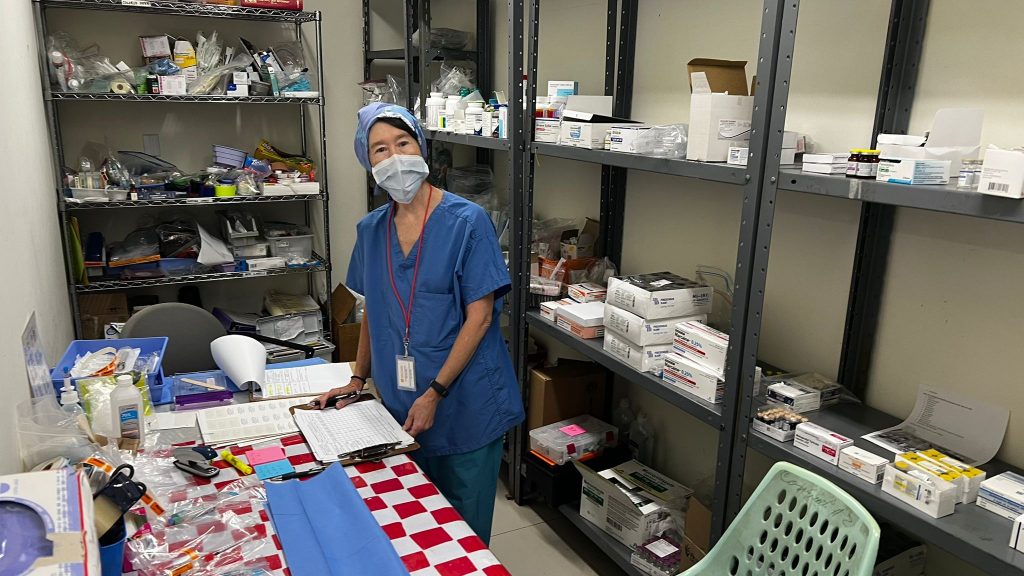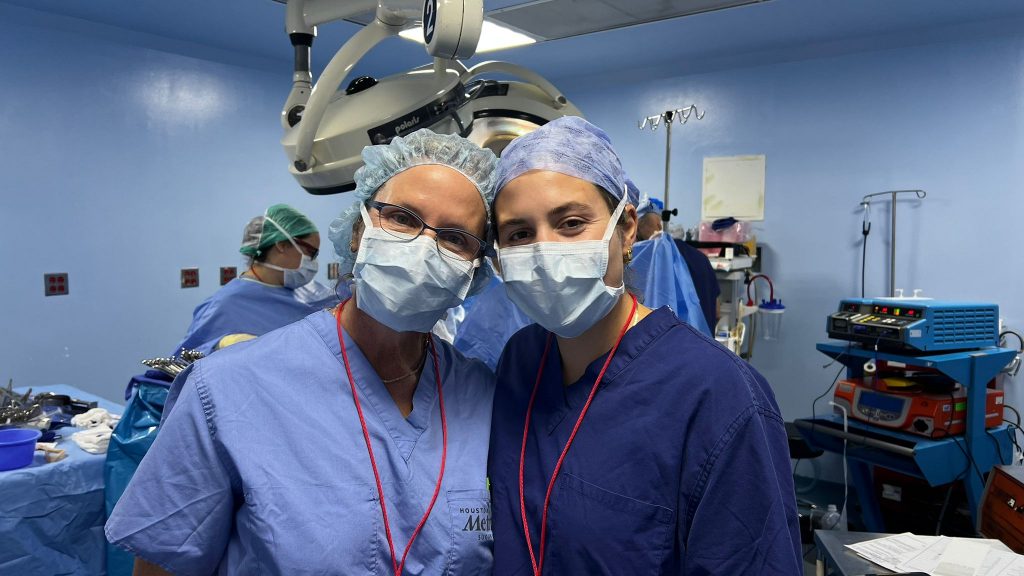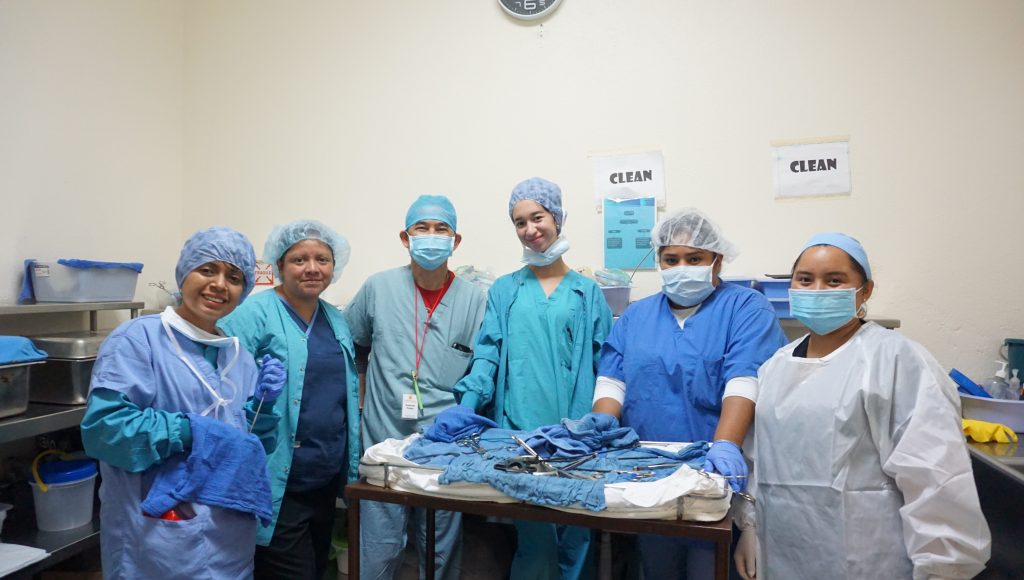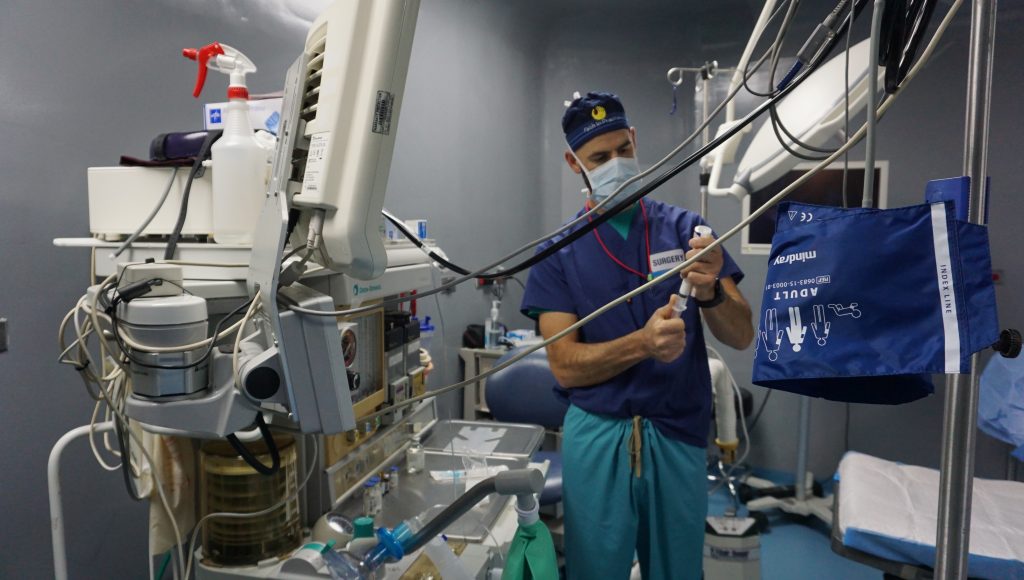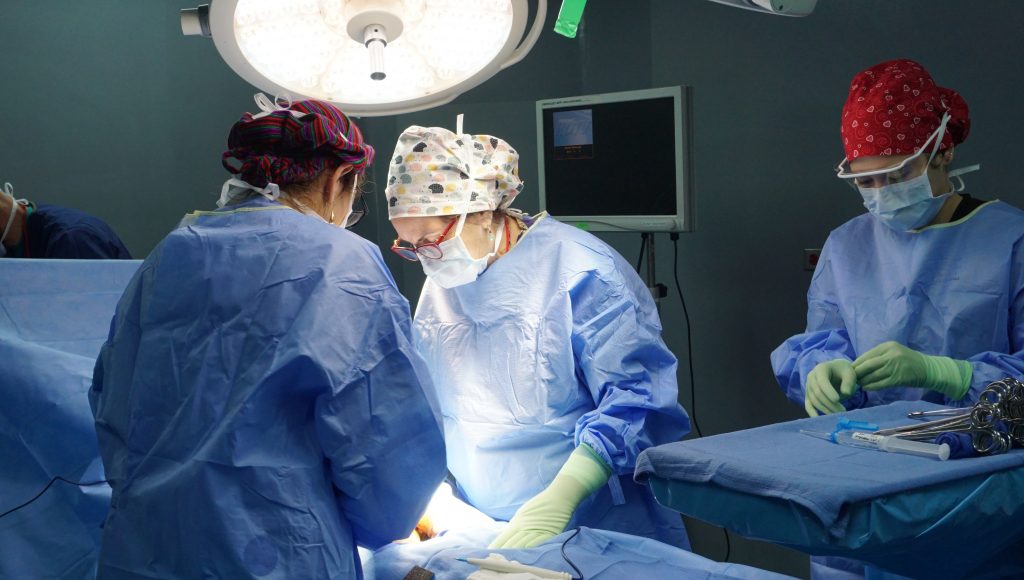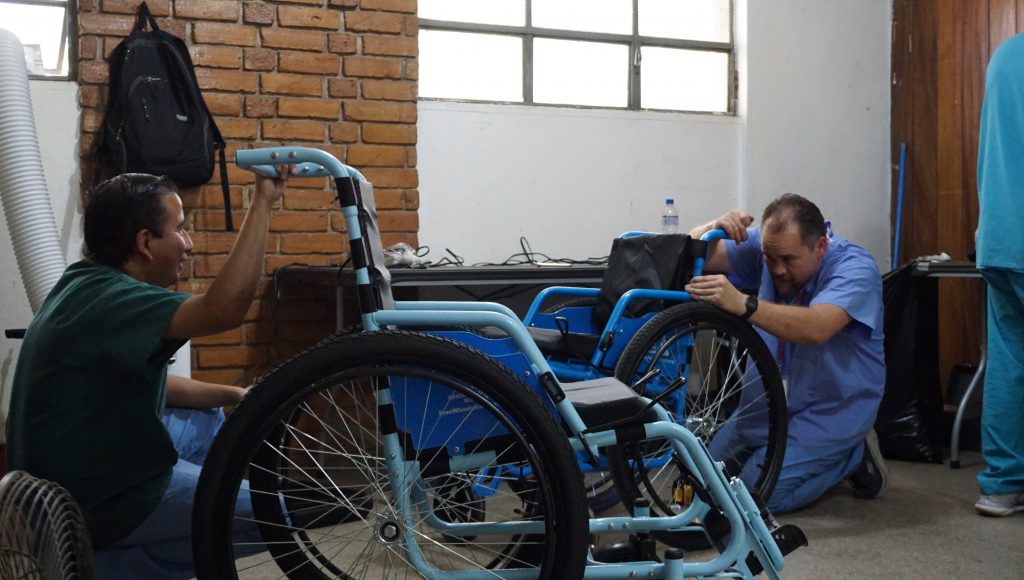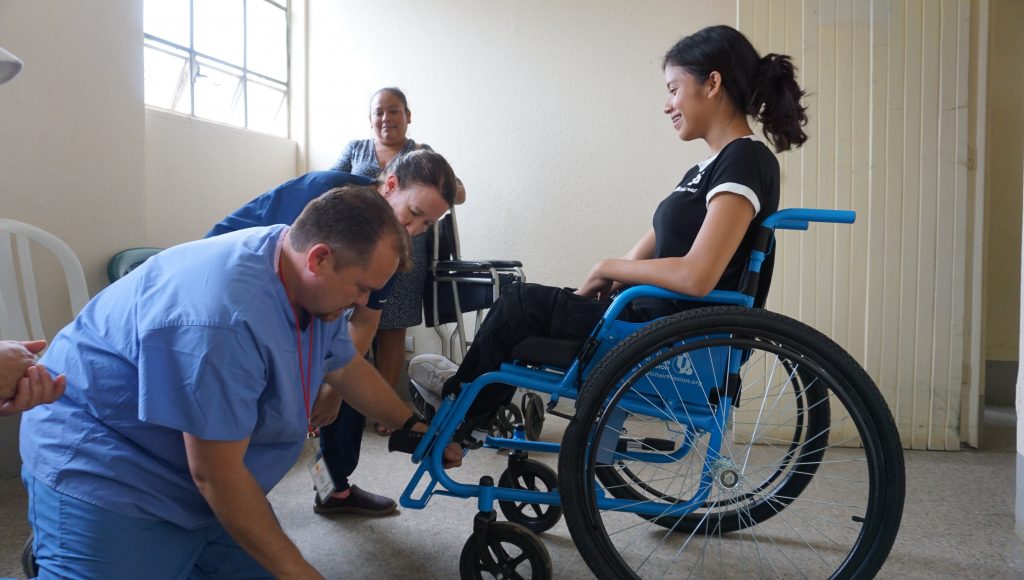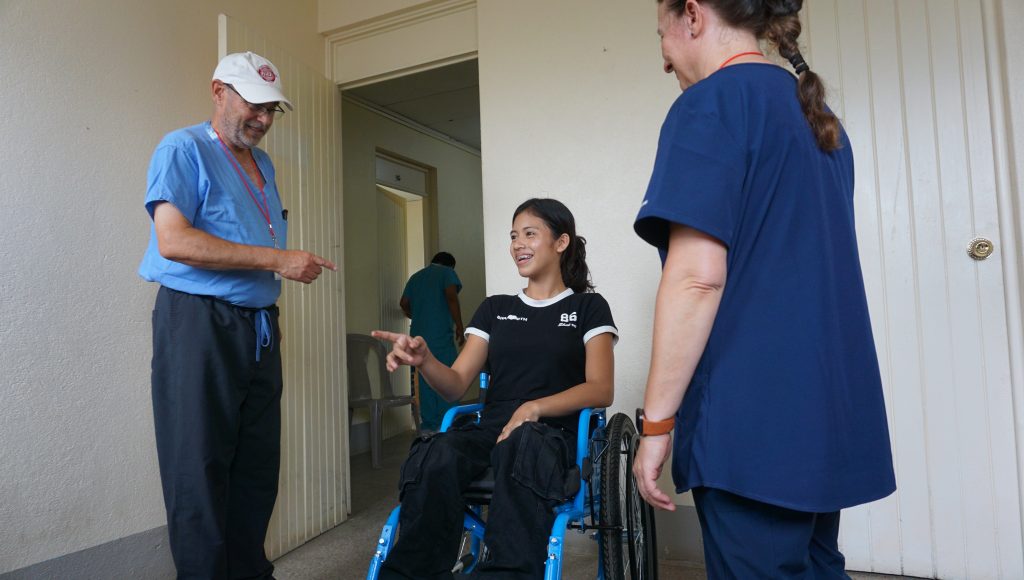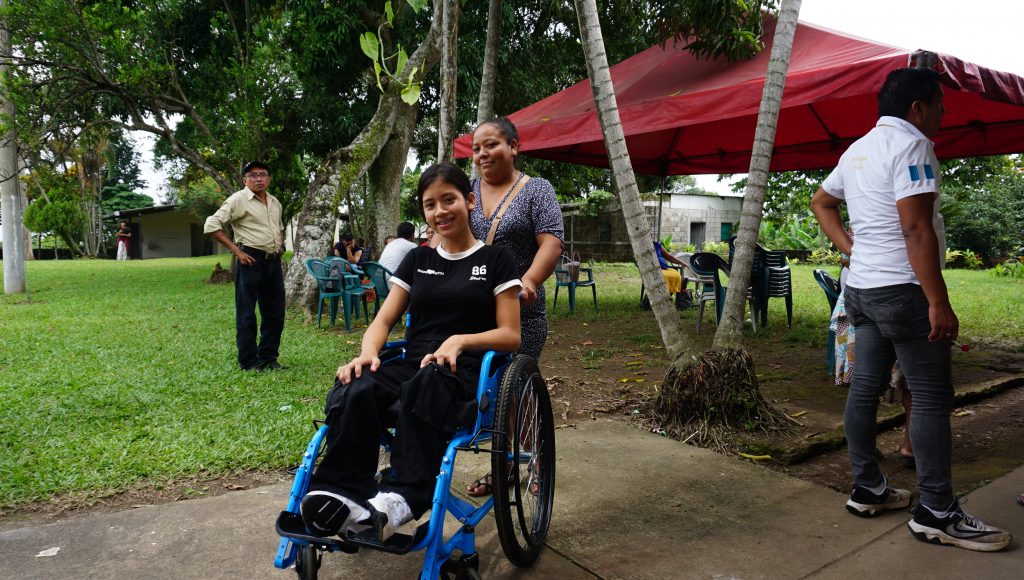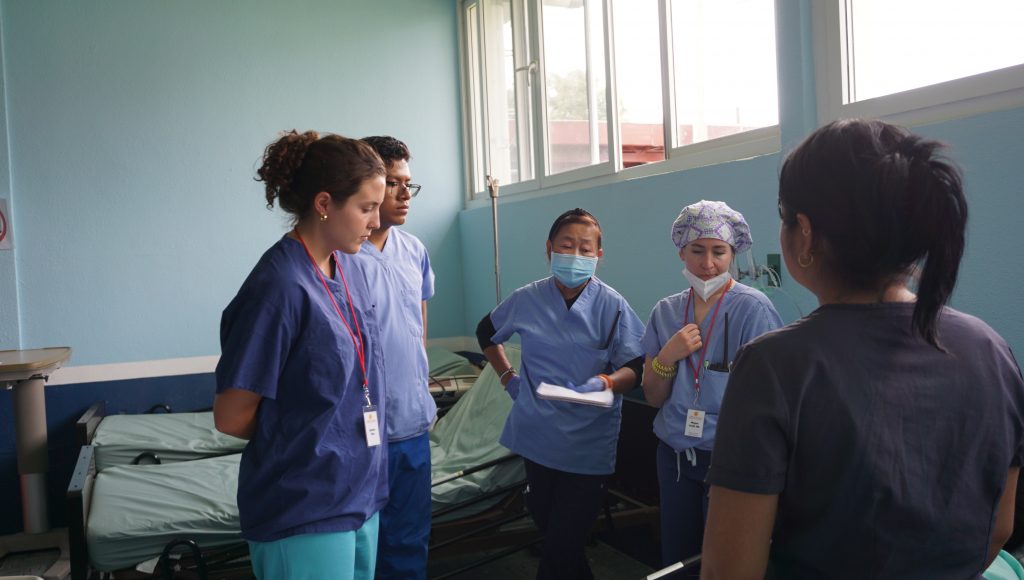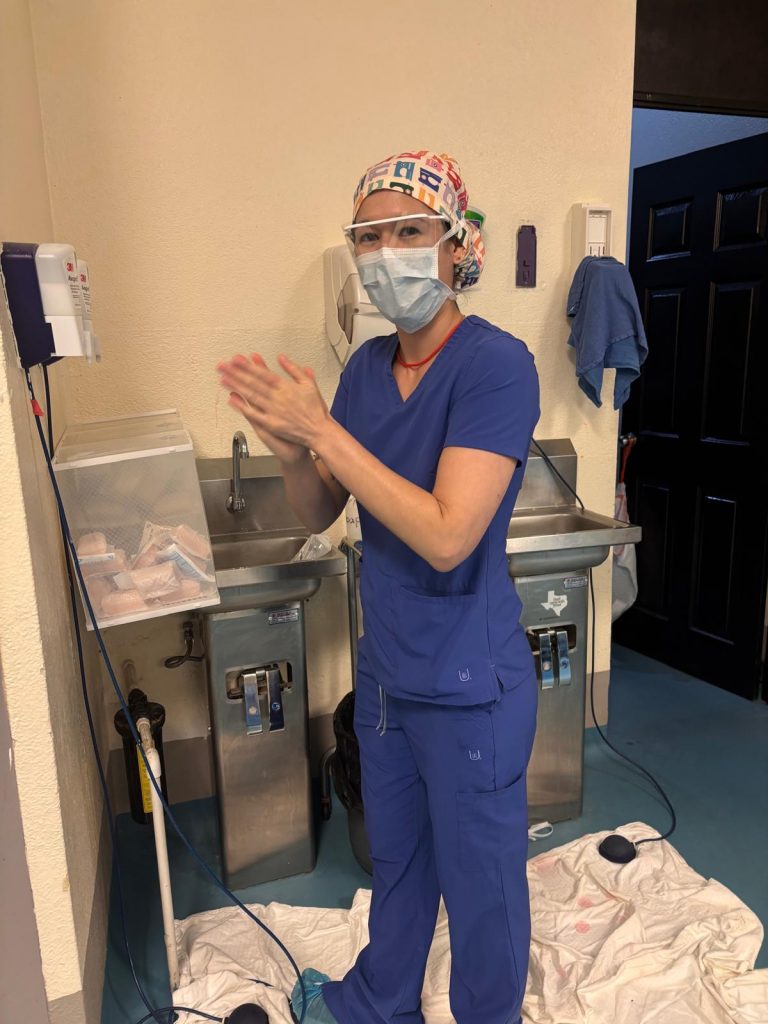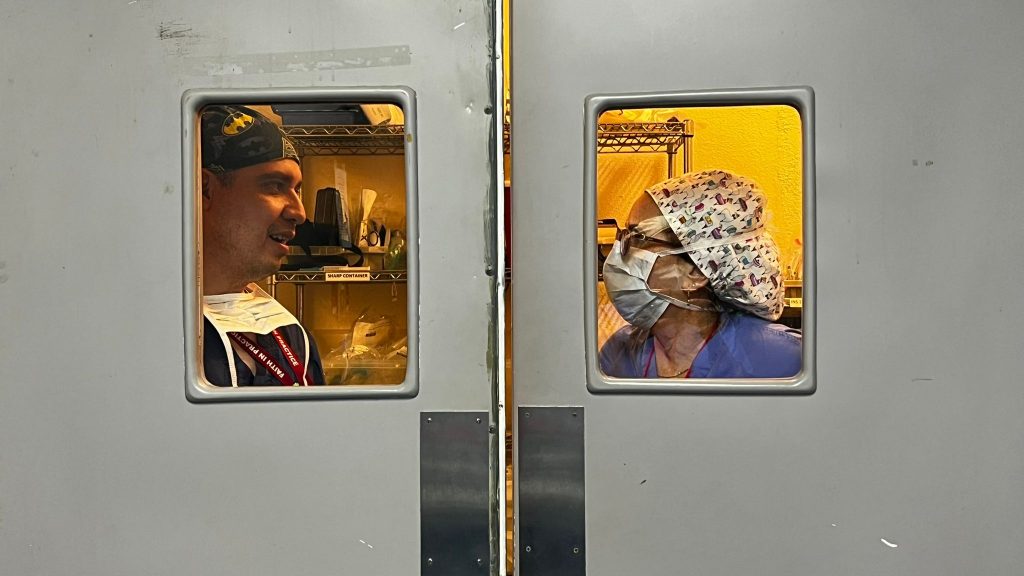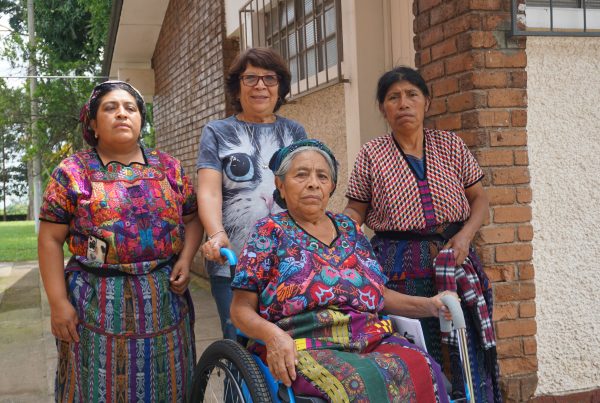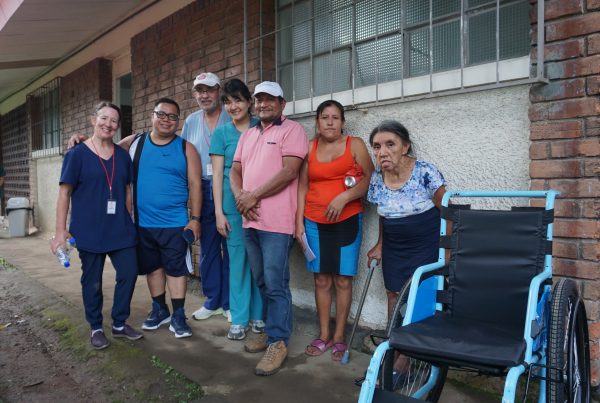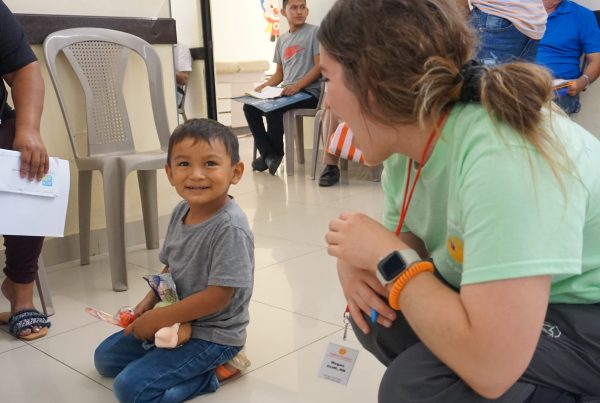Blog, 25 Jun 25
During reflection this morning, I think the most salient moment many folks remembered (and Tony confirmed this) was the reference to Mahatma Gandhi: “the best way to find yourself is to lose yourself in the service of others.” A surgery mission trip to Guatemala is and will be like and unlike mission trips before and after it, but I think the quintessential feature of a trip like this is that there are both a service to be done and people willing to do it, to lose themselves in it. I’m seeing it firsthand. Folks serve freely, in their element, and with the gumption necessary to provide the best service they can.
The bus we take to the hospital from the hotel is a repurposed school bus, which I love, but it’s just a hair smaller than the size we need so that everyone could sit in a seat. A second bus or smaller car isn’t logistically feasible, however, so some of us sit on the floor of the bus, which isn’t uncommon around the community. I spoke with Christina, who is an OR nurse. It’s her third time attending this Faith in Practice mission trip. I asked her why she chooses to come back. “The impact on this person’s daily life,” after receiving a surgery that would prevent them from bleeding every time they go to the bathroom, for example, she said. I think there’s something to be said that every time I’ve asked someone about what they’re getting out of this trip, the first and whole answer has so far always been about how the service impacts the person being served. It’s a testament to the kind of people such a mission attracts. People who would be doing this whether or not I was there to take the photograph.
I asked Christina about how this week has been going relative to past trips. She mentioned that it was going smoothly so far. She did mention though, that on one of the prior trips there was a complication involving an unexpected mass found during a cholecystectomy (removal of the gallbladder). They stopped operating and referred the patient to the appropriate care team. I think the decision to operate only within the scope of the intended procedure seems like both an easy and a difficult one to make, but the team did not hesitate to make it.
Being decisive is a critical skill in the operating rooms here. The supplies, while practical and utilitarian, are not unending and certainly not all-encompassing. While speaking with surgical technician KP, I asked him what advice he would give to someone considering joining a mission trip with Faith in Practice. “You have to be flexible. You have to be able to adapt and adjust in the moment.” Hospital standards in the United States are among the highest in the world, with expectations to match, and those standards don’t drop when a team comes to a community that may be unable to meet those standards on a consistent basis on their own. Earlier in the week, before any surgeries even started, the operating room staff had a huddle. One of the key points emphasized was that standards don’t drop. Rocky and Ester were some of the voices in that huddle: “If you see something that’s off or that isn’t up to par, handle it. You know how something is supposed to be. Keep those standards where they are when you learned them.” Clarissa, Rocky, and Megan worked year-round to procure the necessary equipment for the expected work to be done, and according to OR staff, they did a phenomenal job. But you can’t fit a hospital into 15 trunks. And sometimes needs change. The message of KP and the huddle though is that you need to be ready. There are no complaints when times get tough here. There are only people saying: “we’ll make it work.”
I talked to Aroldo, 59 and from Santa Lucia, in the morning before his surgery. I waited until after the surgeon and the OR nurse had spoken with him. I was told by pre-op staff that between that conversation and actually transitioning to the OR, there was generally about a five minute gap. With Estaban’s support, I asked him a few questions. He heard about the clinic through a friend who managed another clinic. This person had sent a few people here. No word on how they’re doing but I hope they’re doing well. Dr. Tracey made a joke to him, saying that there’s no limit on frijoles but only after the surgery. Presumably none, at least. I asked him what she meant by that. He told us that he wanted to have beans after, expressing this explicitly to her, so she announced what she did. He’s planning on including lots of herbs and veggies. Pre-surgery and he said he’s feeling calm. I asked if he’d done this before and he said about 20 years ago, for the same thing. Nothing new for my guy, who’s just ready to eat.
Today was the first day I observed a procedure from start to finish, in the OR before the patient arrived and out with him as his bed was wheeled into post-op. The procedure was a hernioplasty. Joanne, the circulating nurse in this procedure, was extremely generous with her willingness to take the time to explain to me the ins and outs of the procedure, the staff, the room. She used to work on the floor as a nurse before moving into a directing role in administration. She described being back on the floor as a treat, using the weeks prior to the mission trip to sharpen herself back up by working with her OR staff back in California. As she explained to me what the surgical team was doing and described the functions of various instruments in the room, I got the impression that she was plenty sharp before being on the floor during these recent weeks, having performed in the OR for more than a decade. I learned about the Bovie (a brand of electrosurgical generator system), which utilizes two primary functions for cautery, cut and coag. She told me when the bovie pen, with on-device setting selectors, is preferred versus when the foot pedal, one for cut and one for coag, is preferred (the latter when not the laparoscopy is used). She told me about robotic technologies, with which I was very unfamiliar. She explained to me that the use of laparoscopy and robotics are the gold standard for some cases, but of course surgical staff should be able to perform with the available tools. She mentioned Fantastic Voyage (1966) as a reference for where technology could go. In that film, a team is shrunk and enters a human body, traveling through veins and arteries and valves and cavities. I think Osmosis Jones (2001) is analogous and a more recent representation of a similar idea. Dr. Tracey was kind enough to show me where robotics technology currently is, with the Da Vinci 5, able to more fully submerge a surgeon, with a third hand and haptic indicators to boot.
I’d like to take a moment to reflect on a thought I had at the end of a surgery day, as we waited for the bus to take us back to the hotel. Non-medical in my career and fortunately healthy enough so far to avoid needing surgery, I’ve never needed to be in an operating room. And though I’ve seen one (1) episode of Grey’s Anatomy and 182 episodes of Scrubs, inexplicably I am not familiar with much of what goes on in these rooms. This week, though, I was observing several types of procedures in the rooms as they were conducted. I found much of it remarkable, but what I found remarkable still was less the spectacle of surgery but rather the dynamics of the staff at work. It was remarkable to see the flow of the surgical technologists and OR nurses as they prepared the room and of the anesthesiologists who prepared the patient. It was remarkable to see the deft hands of the surgeons, the physician’s assistants and RNFAs. It was remarkable to see the ebb and flow of the room as each step forward required the synchronization of all hands. And the most remarkable thing in this room to me was how readily the staff shared the ins and outs of what was happening, mid-procedure, not necessarily because it was second nature but because they were happy to do so. Imagine being a fly on the wall and instead of getting swatted, you get fed. That was me. (No actual flies in the room. Flies in the adjacent rooms were swatted.) Every volunteer I spoke to offered information so freely, at every stage of the process. I asked one of the team leaders, Megan, what brought about this kind of disposition. She said that this team comes together because this is both what they do and what they want to do. Not everyone has the luxury of doing what they want to do for a living, but this team seems to be rich in it. “Everyone wants to be here and do this work, so everyone wants to talk about what they do. They’re happy to do it.”
Full disclosure: some of the photos of the operating room posted above are dark and dramatic. This is because I think the photos are better depicted with a higher contrast. However, there are a few photos where the surgical lamps are very bright and the rest of the room is lit regularly. This is the typical lighting during a procedure in the OR. They are, in fact, working with non-dramatic, pretty full-bodied lighting.
Nicolas Petelo, Blogger


